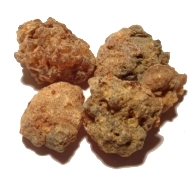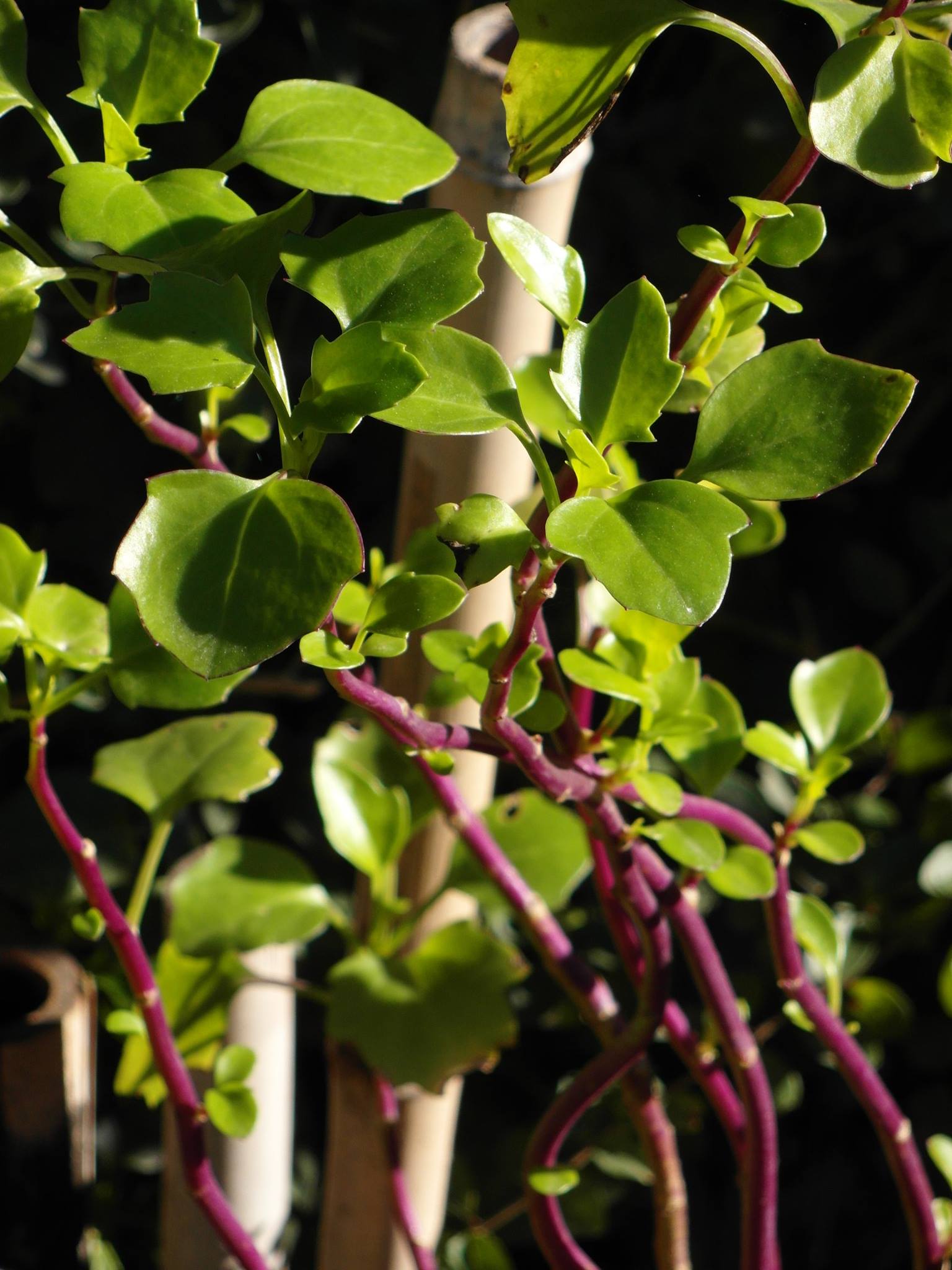|
Commiphora
The genus of the myrrhs, ''Commiphora'', is the most species-rich genus of flowering plants in the frankincense and myrrh family, Burseraceae. The genus contains approximately 190 species of shrubs and trees, which are distributed throughout the (sub-) tropical regions of Africa, the western Indian Ocean islands, the Arabian Peninsula, India, and South America.Weeks, A. and Simpson, B.B. 2007. Molecular phylogenetic analysis of Commiphora (Burseraceae) yields insight on the evolution and historical biogeography of an “impossible” genus. Molecular Phylogenetics and Evolution. 42:62–79. The genus is drought-tolerant and common throughout the xerophytic scrub, seasonally dry tropical forests, and woodlands of these regions. The common name myrrh refers to several species of the genus, from which aromatic resins are derived for various fragrance and medicinal uses by humans. Description Leaves in ''Commiphora'' are pinnately compound (or very rarely unifoliolate). Many spe ... [...More Info...] [...Related Items...] OR: [Wikipedia] [Google] [Baidu] |
Myrrh
Myrrh (; from Semitic, but see '' § Etymology'') is a gum-resin extracted from a number of small, thorny tree species of the genus '' Commiphora''. Myrrh resin has been used throughout history as a perfume, incense and medicine. Myrrh mixed with posca or wine was common across ancient cultures, for general pleasure, and as an analgesic. Extraction and production When a wound on a tree penetrates through the bark and into the sapwood, the tree secretes a resin. Myrrh gum, like frankincense, is such a resin. Myrrh is harvested by repeatedly wounding the trees to bleed the gum, which is waxy and coagulates quickly. After the harvest, the gum becomes hard and glossy. The gum is yellowish and may be either clear or opaque. It darkens deeply as it ages, and white streaks emerge. Myrrh gum is commonly harvested from the species ''Commiphora myrrha''. Another commonly used name, ''Commiphora molmol'', is now considered a synonym of ''Commiphora myrrha''. ''Commiphora myrrha'' ... [...More Info...] [...Related Items...] OR: [Wikipedia] [Google] [Baidu] |
Burseraceae
The Burseraceae are a moderate-sized family of 17-19 genera and about 540 species of flowering plants. The actual numbers differ according to the time period in which a given source is written describing this family. The Burseraceae are also known as the torchwood family, the frankincense and myrrh family, or simply the incense tree family. The family includes both trees and shrubs, and is native to tropical regions of Africa, Asia. Australasia, and the Americas. Just as the family size (in terms of genera and species) differs according to the time period of the study, so, too, does its placement in the higher ranks. Nevertheless, the family is a genetically supported monophyletic group currently and frequently cited within the Sapindales and is recognized as a sister group to the Anacardiaceae. The Burseraceae are characterized by the nonallergenic resin they produce in virtually all plant tissue and the distinctive smooth, yet flaking, aromatic bark.Judd, W.S., Campbell, C.S ... [...More Info...] [...Related Items...] OR: [Wikipedia] [Google] [Baidu] |
Succulent
In botany, succulent plants, also known as succulents, are plants with parts that are thickened, fleshy, and engorged, usually to retain water in arid climates or soil conditions. The word ''succulent'' comes from the Latin word ''sucus'', meaning "juice" or "sap". Succulent plants may store water in various structures, such as leaves and stems. The water content of some succulent organs can get up to 90–95%, such as ''Glottiphyllum semicyllindricum'' and ''Mesembryanthemum barkleyii''. Some definitions also include roots, thus geophytes that survive unfavorable periods by dying back to underground storage organs may be regarded as succulents. The habitats of these water-preserving plants are often in areas with high temperatures and low rainfall, such as deserts, but succulents may be found even in alpine ecosystems growing in rocky soil. Succulents are characterized by their ability to thrive on limited water sources, such as mist and dew, which makes them equipped t ... [...More Info...] [...Related Items...] OR: [Wikipedia] [Google] [Baidu] |
Resin
In polymer chemistry and materials science, resin is a solid or highly viscous substance of plant or synthetic origin that is typically convertible into polymers. Resins are usually mixtures of organic compounds. This article focuses on naturally occurring resins. Plants secrete resins for their protective benefits in response to injury. The resin protects the plant from insects and pathogens. Resins confound a wide range of herbivores, insects, and pathogens, while the volatile phenolic compounds may attract benefactors such as parasitoids or predators of the herbivores that attack the plant. Composition Most plant resins are composed of terpenes. Specific components are alpha-pinene, beta-pinene, delta-3 carene, and sabinene, the monocyclic terpenes limonene and terpinolene, and smaller amounts of the tricyclic sesquiterpenes, longifolene, caryophyllene, and delta-cadinene. Some resins also contain a high proportion of resin acids. Rosins on the other hand ... [...More Info...] [...Related Items...] OR: [Wikipedia] [Google] [Baidu] |
Nikolaus Joseph Von Jacquin
Nikolaus Joseph Freiherr von Jacquin (16 February 172726 October 1817) was a scientist who studied medicine, chemistry and botany. Biography Born in Leiden in the Netherlands, he studied medicine at Leiden University, then moved first to Paris and afterward to Vienna. In 1752, he studied under Gerard van Swieten in Vienna. Between 1755 and 1759, Jacquin was sent to the West Indies, Central America, Venezuela and New Granada by Francis I to collect plants for the Schönbrunn Palace, and amassed a large collection of animal, plant and mineral samples. In 1797, Alexander von Humboldt profited from studying these collections and conversing with Jacquin in preparation of his own journey to the Americas. In 1763, Jacquin became professor of chemistry and mineralogy at the Bergakademie Schemnitz (now Banská Štiavnica in Slovakia). In 1768, he was appointed Professor of Botany and Chemistry and became director of the botanical gardens of the University of Vienna. For his work ... [...More Info...] [...Related Items...] OR: [Wikipedia] [Google] [Baidu] |
Bark (botany)
Bark is the outermost layers of stems and roots of woody plants. Plants with bark include trees, woody vines, and shrubs. Bark refers to all the tissues outside the vascular cambium and is a nontechnical term. It overlays the wood and consists of the inner bark and the outer bark. The inner bark, which in older stems is living tissue, includes the innermost layer of the periderm. The outer bark on older stems includes the dead tissue on the surface of the stems, along with parts of the outermost periderm and all the tissues on the outer side of the periderm. The outer bark on trees which lies external to the living periderm is also called the rhytidome. Products derived from bark include bark shingle siding and wall coverings, spices and other flavorings, tanbark for tannin, resin, latex, medicines, poisons, various hallucinogenic chemicals and cork. Bark has been used to make cloth, canoes, and ropes and used as a surface for paintings and map making. A number of ... [...More Info...] [...Related Items...] OR: [Wikipedia] [Google] [Baidu] |
Exfoliation (botany)
Exfoliation (from the term "foliate", meaning “related to leaves”) means the removal or loss of leaves from a plant. It is used both to describe the loss of a leaves as a natural part of a plant's life cycle (such as in the case of deciduous trees which lose their leaves in the autumn) or because of some trauma or outside cause (such as dehydration, an infestation of caterpillars or hurricane-force winds). In arboriculture, the term “exfoliating bark” describes the natural process and condition of the bark peeling-away from a tree trunk, typically in large pieces that remain partially attached to the trunk until such time as they are completely detached by the elements or the eventual and subsequent exfoliation of additional layers of bark. Examples of trees with exfoliating bark are the paperbark maple and various species of Plane (Sycamore) and birch A birch is a thin-leaved deciduous hardwood tree of the genus ''Betula'' (), in the family Betulaceae, which a ... [...More Info...] [...Related Items...] OR: [Wikipedia] [Google] [Baidu] |
Photosynthetic
Photosynthesis is a process used by plants and other organisms to convert light energy into chemical energy that, through cellular respiration, can later be released to fuel the organism's activities. Some of this chemical energy is stored in carbohydrate molecules, such as sugars and starches, which are synthesized from carbon dioxide and water – hence the name ''photosynthesis'', from the Greek ''phōs'' (), "light", and ''synthesis'' (), "putting together". Most plants, algae, and cyanobacteria perform photosynthesis; such organisms are called photoautotrophs. Photosynthesis is largely responsible for producing and maintaining the oxygen content of the Earth's atmosphere, and supplies most of the energy necessary for life on Earth. Although photosynthesis is performed differently by different species, the process always begins when energy from light is absorbed by proteins called reaction centers that contain green chlorophyll (and other colored) pigments/chromophore ... [...More Info...] [...Related Items...] OR: [Wikipedia] [Google] [Baidu] |
Plant Stem
A stem is one of two main structural axes of a vascular plant, the other being the root. It supports leaves, flowers and fruits, transports water and dissolved substances between the roots and the shoots in the xylem and phloem, stores nutrients, and produces new living tissue. The stem can also be called halm or haulm. The stem is normally divided into nodes and internodes: * The nodes hold one or more leaves, as well as buds which can grow into branches (with leaves, conifer cones, or flowers). Adventitious roots may also be produced from the nodes. * The internodes distance one node from another. The term " shoots" is often confused with "stems"; "shoots" generally refers to new fresh plant growth including both stems and other structures like leaves or flowers. In most plants stems are located above the soil surface but some plants have underground stems. Stems have four main functions which are: * Support for and the elevation of leaves, flowers, and fruits. The st ... [...More Info...] [...Related Items...] OR: [Wikipedia] [Google] [Baidu] |
Drupe
In botany, a drupe (or stone fruit) is an indehiscent fruit in which an outer fleshy part ( exocarp, or skin, and mesocarp, or flesh) surrounds a single shell (the ''pit'', ''stone'', or '' pyrena'') of hardened endocarp with a seed (''kernel'') inside. These fruits usually develop from a single carpel, and mostly from flowers with superior ovaries (polypyrenous drupes are exceptions). The definitive characteristic of a drupe is that the hard, lignified stone is derived from the ovary wall of the flower. In an aggregate fruit, which is composed of small, individual drupes (such as a raspberry), each individual is termed a drupelet, and may together form an aggregate fruit. Such fruits are often termed '' berries'', although botanists use a different definition of ''berry''. Other fleshy fruits may have a stony enclosure that comes from the seed coat surrounding the seed, but such fruits are not drupes. Flowering plants that produce drupes include coffee, jujube, ma ... [...More Info...] [...Related Items...] OR: [Wikipedia] [Google] [Baidu] |
Plant Sexuality
Plant reproductive morphology is the study of the physical form and structure (the morphology) of those parts of plants directly or indirectly concerned with sexual reproduction. Among all living organisms, flowers, which are the reproductive structures of angiosperms, are the most varied physically and show a correspondingly great diversity in methods of reproduction. Plants that are not flowering plants (green algae, mosses, liverworts, hornworts, ferns and gymnosperms such as conifers) also have complex interplays between morphological adaptation and environmental factors in their sexual reproduction. The breeding system, or how the sperm from one plant fertilizes the ovum of another, depends on the reproductive morphology, and is the single most important determinant of the genetic structure of nonclonal plant populations. Christian Konrad Sprengel (1793) studied the reproduction of flowering plants and for the first time it was understood that the pollination process involved ... [...More Info...] [...Related Items...] OR: [Wikipedia] [Google] [Baidu] |


.jpg)




